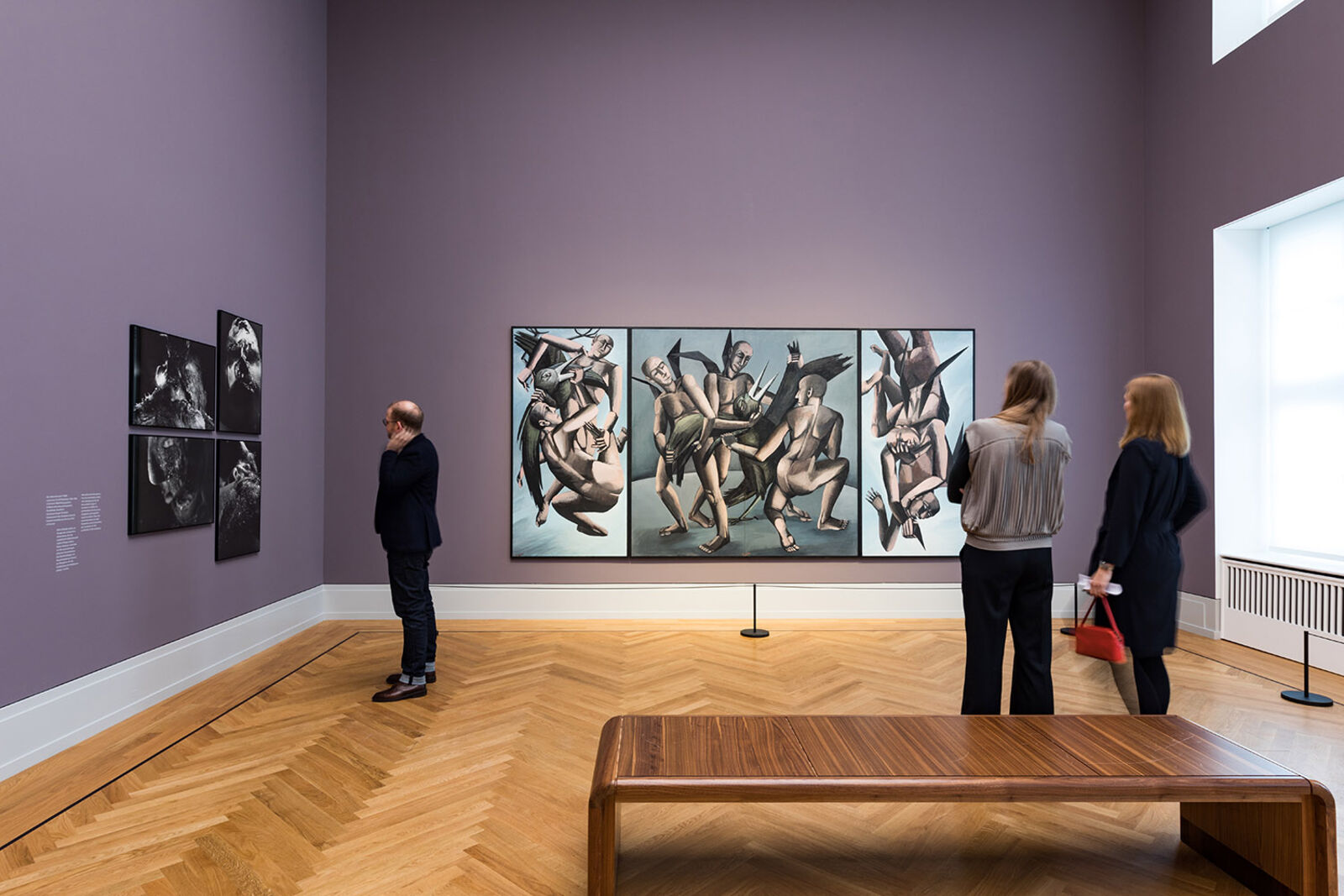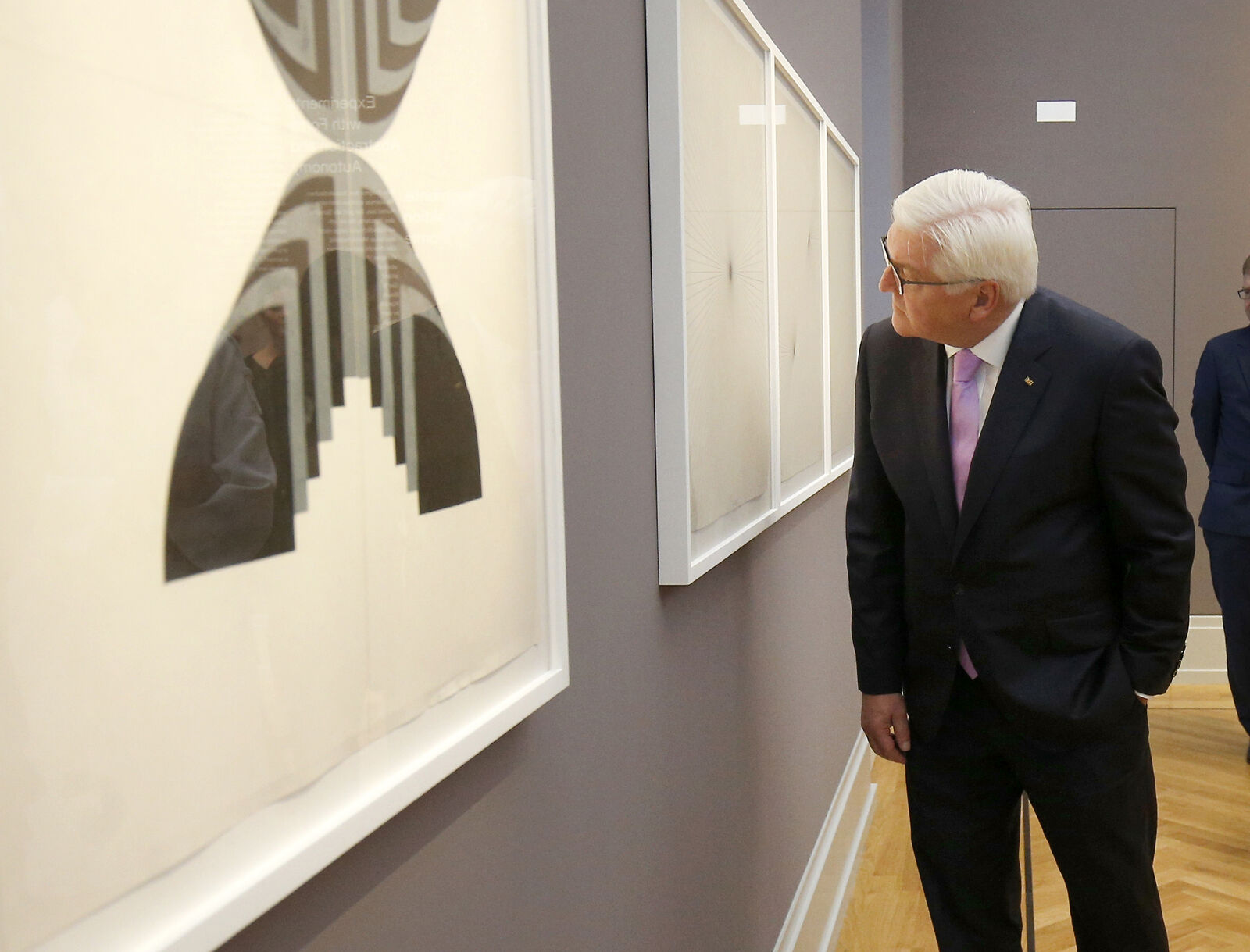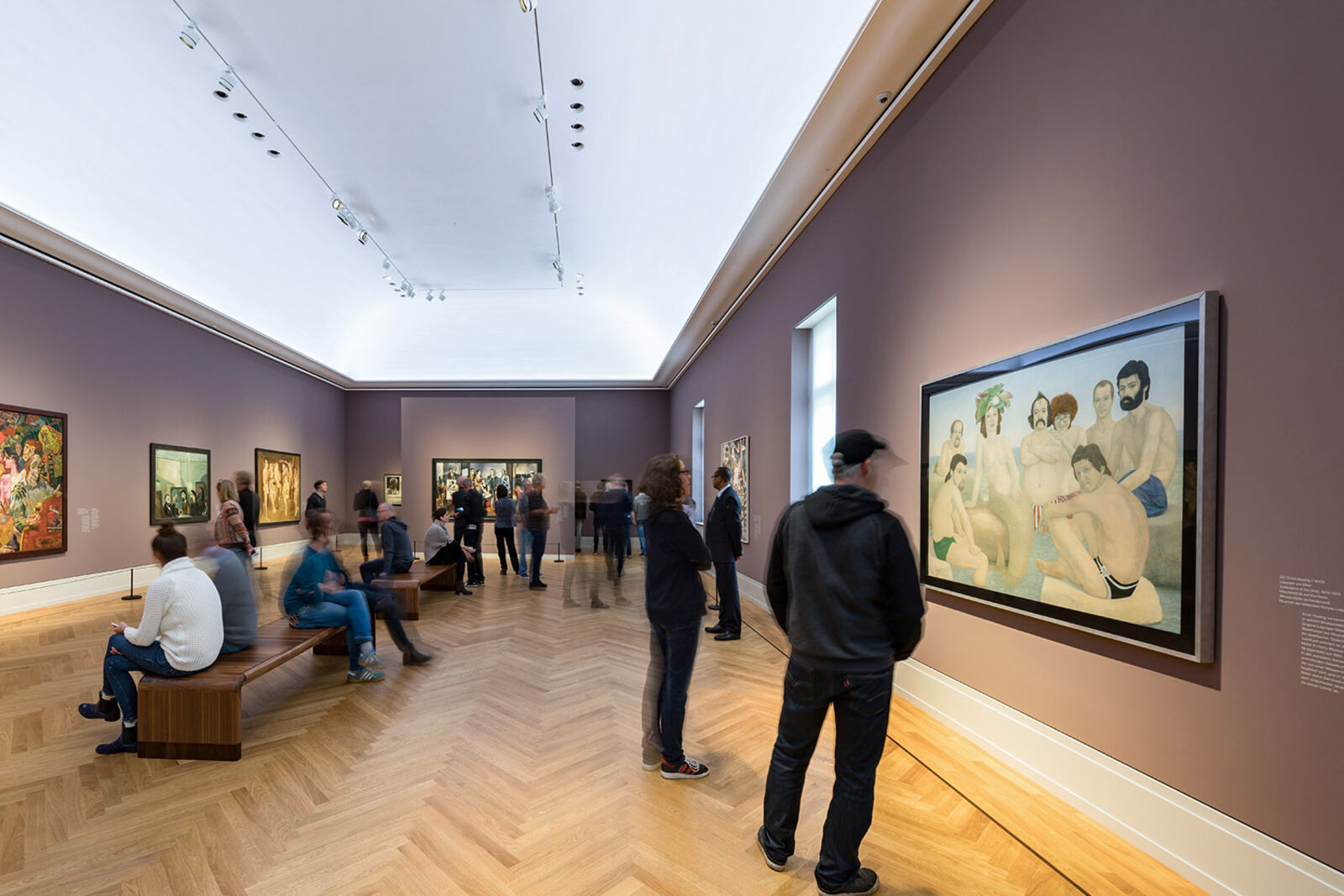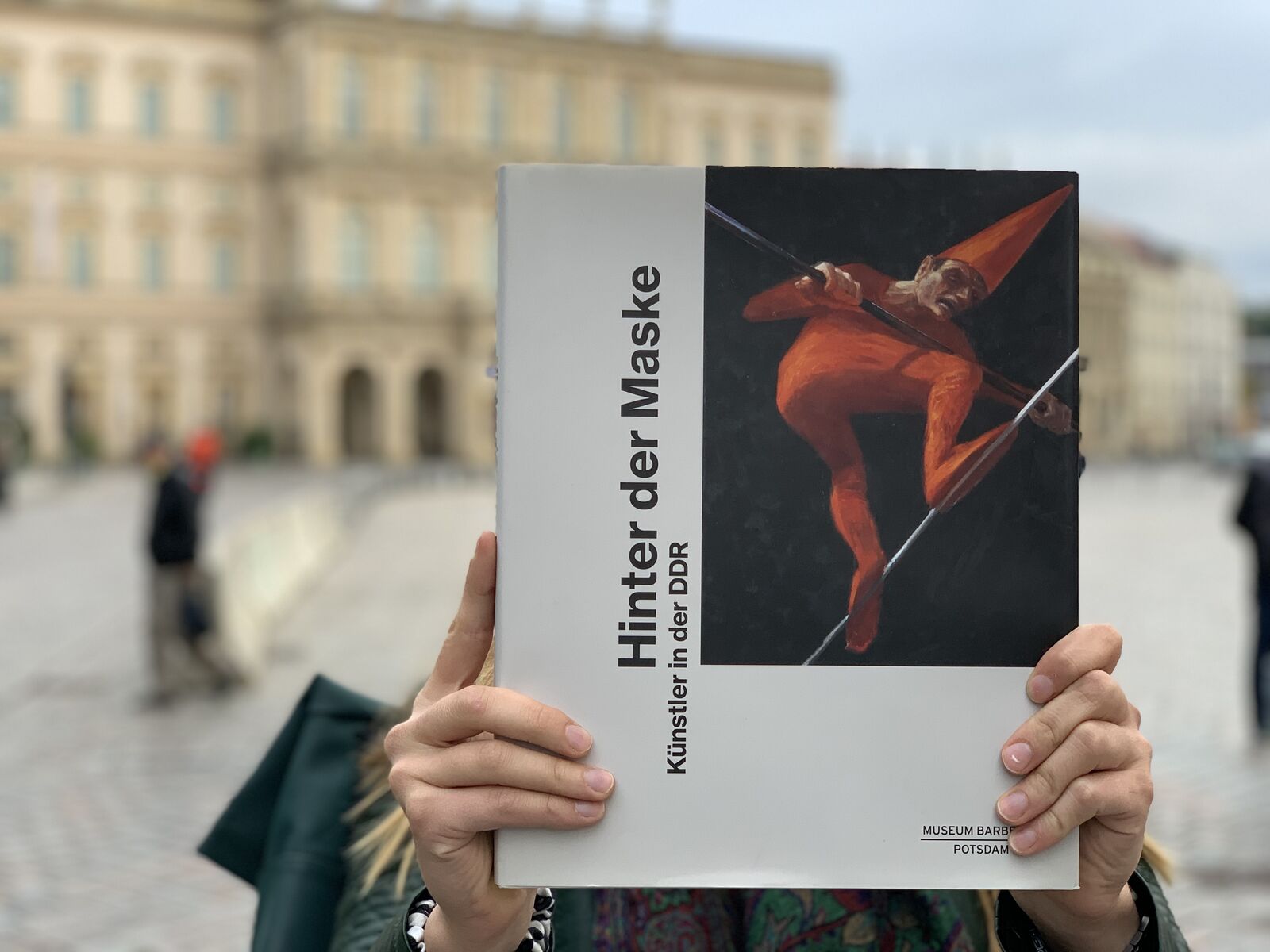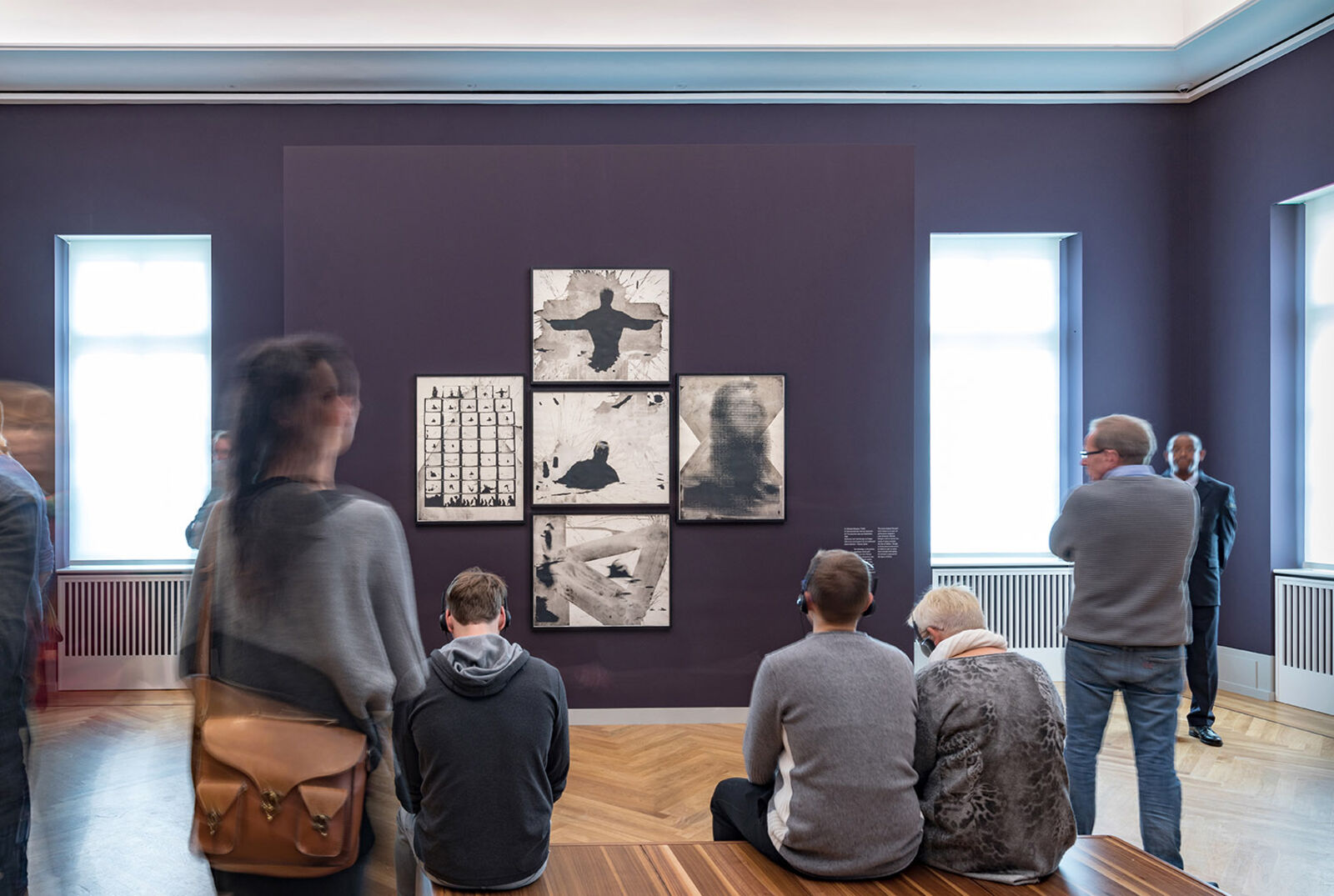
Behind the Mask: Artists in the GDR
The self-expression of artists was the dominant topic of painting in the German Democratic Republic. All facets of this subject were explored for the first time in this exhibition.
Artists in the GDR were caught between providing a role model and retreating into seclusion, between operating within a prescribed collective and pursuing creative individuality. How did they reflect the way they saw their profession and their own take on the official mission to educate the public? This exhibition brought together works of art that in self-portraits and group portraits, role projections, and studio scenes illustrated the critical gaze they turned upon themselves. Behind the Mask: Artists in the GDR was about the self-styling of artists as individuals from 1945 to 1989, presented through four generations in paintings, photographs, prints, drawings, collages, sculptures, and performances. It proved that art cannot be reduced to ideological ascriptions.
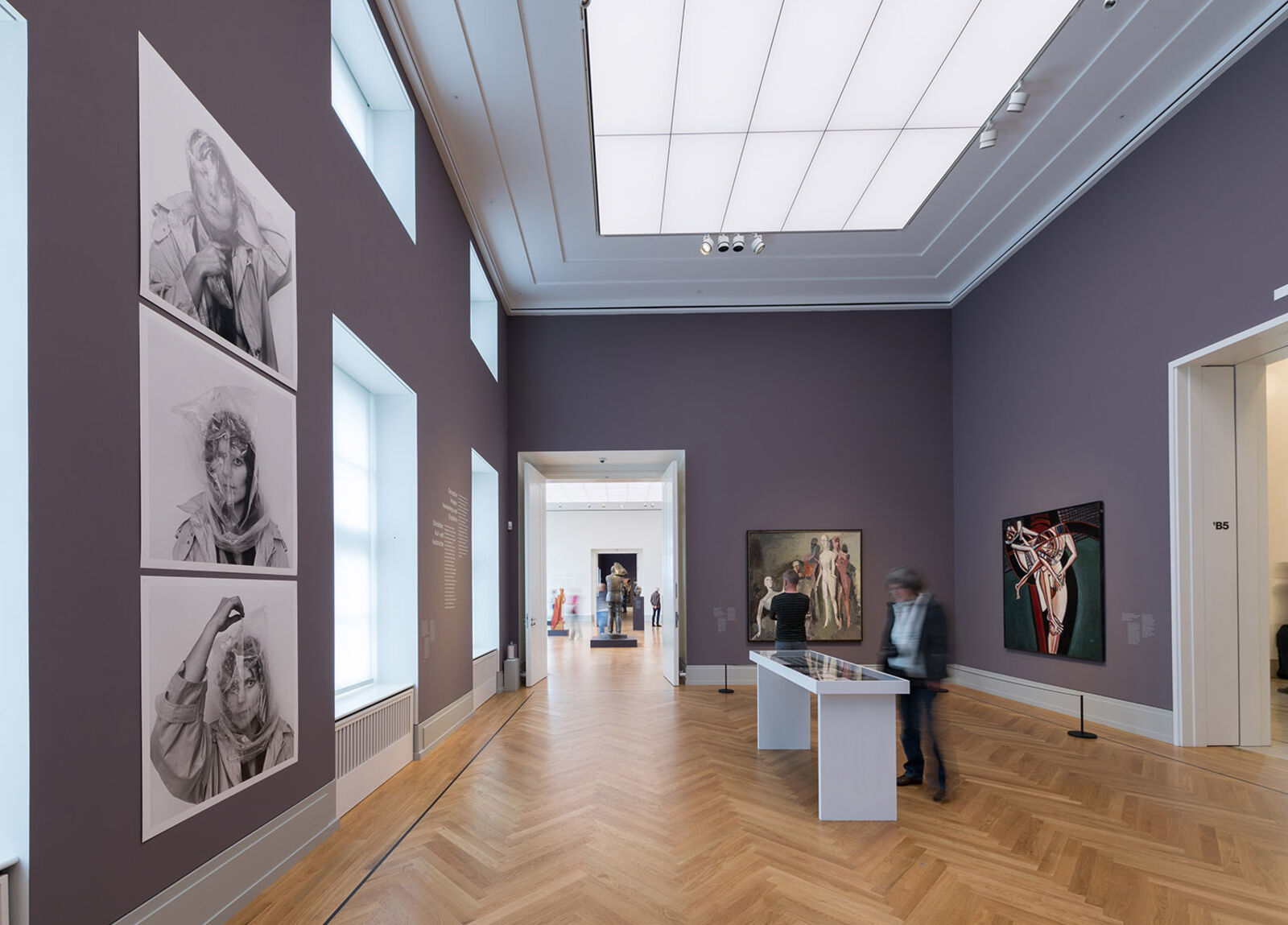
© VG Bild-Kunst, Bonn 2020; Photo: Helge Mundt
Cornelia Schleime: I Won’t Hold My Breath After All, Performance in Hüpstedt, 1982, Courtesy of Galerie Michael Schultz, Berlin; Günter Firit: Self-Destruction, 1987, Estate of Günter Firit
“Unavoidably, the theme of the artist in the GDR seems to invoke the opposition between the creative individual and the all-powerful state, given that East German cultural politics, with its mixture of sponsorship, repression, and prescriptions regarding both content and form, imposed narrow limits on artists. Despite the totality of bureaucratic oversight, despite state regulation and regimentation, some leeway for artistic self-realization did exist in the GDR.”
With this exhibition, the Museum Barberini began to explore the Hasso Plattner Collection of GDR art. Building on in-house holdings, the show brought together more than one hundred works by eighty artists, including loans from private collections as well as museums in Berlin, Dresden, Leipzig, and Halle. The selection included works by Karl-Heinz Adler, Strawalde (Jürgen Böttcher), Hartwig Ebersbach, Hermann Glöckner, Hans-Hendrik Grimmling , Bernhard Heisig, Wolfgang Mattheuer, Harald Metzkes, A. R. Penck, Stefan Plenkers, Evelyn Richter, Arno Rink, Willi Sitte, Werner Tübke, Elisabeth Voigt, Trak Wendisch, and the artist group Clara Mosch. The exhibition provoked extensive debates in the German media.
Retrospect
The exhibition, sponsored by Federal President Frank-Walter Steinmeier, illuminated the exhibited works in the tradition of European art and gave voice to a younger generation of researchers. Works were received on loan from institutions including the Nationalgalerie Berlin, the Brandenburgisches Landesmuseum für moderne Kunst, the Staatliche Kunstsammlungen Dresden, the Kunstmuseum Moritzburg, and the Museum der bildenden Künste Leipzig.
Media Partners

